Traumatic Brain Injury (TBI)
The treatment of TBI is critical; it is estimated that between 3.2 and 5.3 million Americans live with permanent disabilities as a direct result of a TBI(1). Traumatic brain injuries (TBI) refer to injuries to the brain caused by an external physical force(2). Such injuries result in brain dysfunction, which can lead to cognitive impairments such as decreased attention, memory loss, and reduced cognitive flexibility as well as motor issues(3). However, there is compelling evidence to suggest that HBOT may significantly reduce the negative symptoms experienced by TBI patients, even years after the incident.
Extivita Therapies for TBI:
Extivita Therapies Traumatic Brain Injury Recovery:
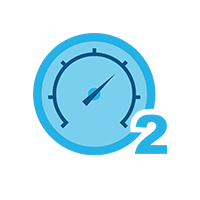
Hyperbaric Oxygen Therapy
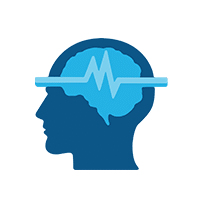
Neurofeedback
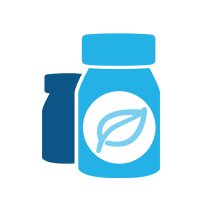
Supplements

Nutritional IV Therapy

Pulsed Electromagnetic Field Therapy
Hyperbaric Oxygen Therapy for Traumatic Brain Injury:
Research suggests that increased tissue oxygenation, improved cellular metabolism and mitochondrial function, and improved inflammatory response, to name a few, are responsible for improving the following cognitive impairments(5):
- Improved Memory (most improvement)
- Reduced Attention Problems (high improvement)
- Improved Executive Function
- Increased Information Processing Speed
- Improved Motor Skills
Effects of HBOT on Traumatic Brain Injury:
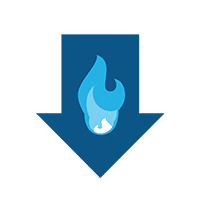
Decreased Inflammation

Increased Stem Cell Activity
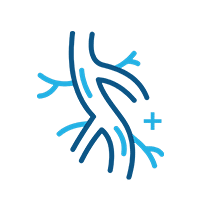
New Blood Vessel Formation
Hyperbaric oxygen therapy stimulates the formation of new blood vessels, healing injured tissues that were unable to get nutrients and oxygen.
Neurofeedback for Traumatic Brain Injury:
Neurofeedback has been shown to improve many of the cognitive issues that patients with traumatic brain injuries (TBIs) experience post-injury(6, 7). After a TBI, the brain must form new neural pathways to account for any brain tissue damaged by the TBI. These new connections play a vital role in restoring healthy brain function, and neurofeedback has been shown to help establish and help strengthen such connections(6). Most studies that use neurofeedback to help TBIs train to increase theta and alpha brainwaves in the occipital lobe (towards the back of the head). This has been shown to improve reduce stress (which has a negative physiological and emotional effect in TBIs), increase relaxation, and improve cognitive measures such as memory and processing speed. (6, 7, 8, 9).
IV Therapy for Traumatic Brain Injury:
The combination of the Myer’s cocktail and glutathione IV’s can improve cognitive and motor function following traumatic brain injury. A principal issue post-TBI is the degree neuroinflammation, which is directly correlated to the severity of the short-term and long-term consequences of TBI. In TBI patients, the mitochondria in brain cells become damaged, activating immune cells (glia, microglia, and astrocytes). These immune cells release inflammatory cytokines which recruit even more inflammatory cells to the area. This results in brain cell swelling, death, decreased energy production, all of which lead to impaired cognitive and motor function(10).
The Myers cocktail IV contains Vitamin C and other antioxidants which have been shown to decrease oxidative stress and inflammatory responses. By doing do, the Myer’s cocktail can help minimize further cells damage and improve brain health and function after a TBI(11, 12). Glutathione, the master antioxidant, has been used to reduce oxidative stress and enhance cellular detoxification and can be part of a multi-modal therapy in correcting the metabolic crisis in TBI.
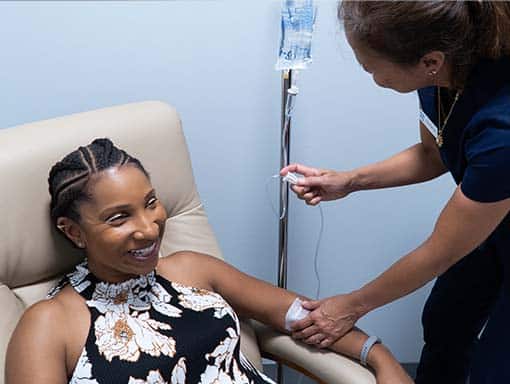
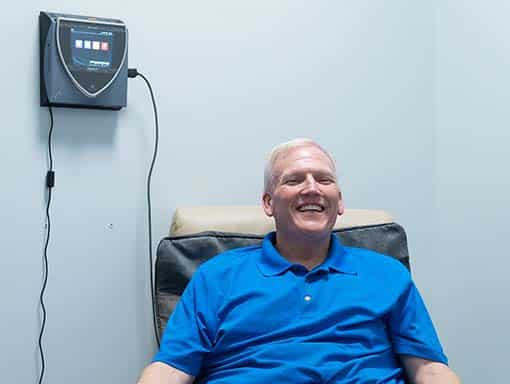
Pulsed Electromagnetic Field Therapy for Traumatic Brain Injury:
Micro vessels play a significant role in overall course of vascular diseases. Dysfunction to this system has been linked to a multitude of illnesses. The PEMF device has been shown to optimize the microcirculatory system, increasing perfusion to tissues and organs. When used in conjunction with HBOT, oxygen rich blood can be delivered to these areas, where healing can begin (13).
News & Research for for Traumatic Brain Injury:
Veterans Study Reports Reduction in Suicide Ideation After HBOT
New Orleans, LA - A pilot case control study of veterans of the US armed forces with mild traumatic brain injury (TBI) or persistent post-concussion syndrome (PPCS), with or without post-traumatic stress disorder (PTSD), has found significant improvements...
Legionnaire Praises VA Decision to Allow Hyperbaric Oxygen Treatment
A recent Department of Veterans Affairs decision to begin offering hyperbaric oxygen therapy (HBOT) to some veterans with post-traumatic stress disorder has drawn praise from the chairman of The American Legion’s PTSD/TBI Ad Hoc Committee. Read the full...
Hyperbaric oxygen promotes neural stem cell proliferation by activating vascular endothelial growth factor/extracellular signal-regulated kinase signaling after traumatic brain injury.
Hyperbaric oxygen (HBO) therapy and neural stem cell (NSC) transplantation can improve traumatic brain injury (TBI) clinically. This study aimed to investigate the mechanism of HBO promoting NSC proliferation and neurological recovery after TBI. Twenty-four Sprague-Dawley rats were divided randomly into three groups: a sham group, a TBI group (constructed using Feeney’s free-fall method), and an HBO-treated TBI group. Neurological function was evaluated by Neurological Severity Scores on days 1, 3, and 7, and we found that TBI-induced poor neurological function was improved by HBO. On day 7 after TBI, we observed that TBI promoted NSC proliferation, migration to the lesion area, and the levels of vascular endothelial growth factor (VEGF), VEGFR2, Raf-1, MEK1/2, and phospho-extracellular signal-regulated kinase (ERK) 1/2 protein, which were further boosted by HBO, from immunohistochemistry, immunofluorescence, and Western blot experiments. In vitro, cell injury was applied to NSCs isolated from neonatal Sprague-Dawley rats by the Cell Injury Controller II system. Moreover, data from the BrdU Kit and Western blot showed that in-vitro HBO significantly accelerated NSC proliferation and the levels of proteins related to cell cycle and the VEGF/ERK pathway after cell injury, which was suppressed by the VEGFR2 inhibitor. Taken together, this study indicated that HBO may promote NSC proliferation by activating VEGF/ERK signaling and play a crucial role in neuroprotection after TBI.
References
- Tbi_report_to_congress_epi_and_rehab-a.Pdf.” Accessed June 2, 2019. https://www.cdc.gov/traumaticbraininjury/pdf/tbi_report_to_congress_epi_and_rehab-a.pdf.
- Silver, J.M., T.W. McAllister, and D.B. Arciniegas. Textbook of Traumatic Brain Injury. American Psychiatric Publishing, 2018. https://books.google.com/books?id=ViKMDwAAQBAJ.
- Hadanny A, Abbott S, Suzin G, et al. Effect of hyperbaric oxygen therapy on chronic neurocognitive deficits of post-traumatic brain injury patients: retrospective analysis. BMJ Open 2018;8:e023387. doi: 10.1136/bmjopen-2018-023387 https://bmjopen.bmj.com/content/bmjopen/8/9/e023387.full.pdf
- Boussi-Gross R, Golan H, Fishlev G, et al. Hyperbaric oxygen therapy can improve post concussion syndrome years after mild traumatic brain injury – randomized prospective trial. PLoS One 2013;8(11):e79995 https://www.ncbi.nlm.nih.gov/pubmed/24260334
- Efrati S, Ben-Jacob E. Reflections on the neurotherapeutic effects of hyperbaric oxygen. Expert Rev Neurother 2014;14:233–6. https://www.tandfonline.com/doi/full/10.1586/14737175.2014.884928
- Munivenkatappa, Ashok, et al. “EEG Neurofeedback Therapy: Can It Attenuate Brain Changes in TBI?” NeuroRehabilitation, vol. 35, no. 3, IOS Press, Jan. 2014, pp. 481–84. content.iospress.com, doi:10.3233/NRE-141140.
- Bennett, Cathlyn N., et al. “Clinical and Biochemical Outcomes Following EEG Neurofeedback Training in Traumatic Brain Injury in the Context of Spontaneous Recovery:” Clinical EEG and Neuroscience, SAGE PublicationsSage CA: Los Angeles, CA, Dec. 2017. Sage CA: Los Angeles, CA, journals.sagepub.com, doi:10.1177/1550059417744899.
- Reddy, Rajakumari Pampa, et al. “Silent Epidemic: The Effects of Neurofeedback on Quality-of-Life.” Indian Journal of Psychological Medicine, vol. 36, no. 1, 2014, pp. 40–44. PubMed Central, doi:10.4103/0253-7176.127246.
- Reddy, Rajakumari P., et al. “Neurofeedback Training to Enhance Learning and Memory in Patient with Traumatic Brain Injury: A Single Case Study.” The Indian Journal of Neurotrauma, vol. 6, no. 1, June 2009, pp. 87–90. ScienceDirect, doi:10.1016/S0973-0508(09)80037-3.
- Cheng, G., Kong, R.‐h., Zhang, L.‐m. and Zhang, J.‐n. (2012), Mitochondria in traumatic brain injury and mitochondrial‐targeted multipotential therapeutic strategies. British Journal of Pharmacology, 167: 699-719. doi:10.1111/j.1476-5381.2012.02025.x
- KC, Sagan et al. “Vitamin C enters mitochondria via facilitative glucose transporter 1 (Glut1) and confers mitochondrial protection against oxidative injury.” FASEB journal : official publication of the Federation of American Societies for Experimental Biology vol. 19,12 (2005): 1657-67. doi:10.1096/fj.05-4107com
- Zhang, Xiao-Ying et al. “Vitamin C alleviates LPS-induced cognitive impairment in mice by suppressing neuroinflammation and oxidative stress.” International immunopharmacology vol. 65 (2018): 438-447. doi:10.1016/j.intimp.2018.10.020
- https://www.imin-org.eu/images/science/Haug-Report-Bemer_2016_Englisch.pdf
